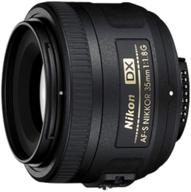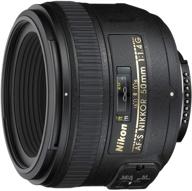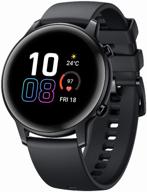
Review on 📷 Sigma 10-20mm f/4-5.6 EX DC HSM Lens for Canon DSLR Cameras: A Powerful Photographic Tool for Expansive Perspectives by Sean Santhanam

An excellent lens for its price.
I would give this lens 4 stars which I think is about as good as you unless the lens is really outstanding and top notch. Since there are significantly more expensive lenses with finer workmanship in the tube and glass, that's damn good. Having said that, I have to say that I tested the lens in real life situations where some features lag behind. sharpness. I'm still using my trusty 10.10MP Rebel XTi Kiss, which can only produce so much sharpness from each lens due to the CMOS resolution. The Sigma 10-20 delivers the same sharpness from the center to the edges of the field of view as my Canon 17-40mm zoom at the same focal lengths. autofocus. This is where Sigma can fail. Based on the chart line test in a flat field at 45 degrees to the camera, autofocus always focuses well ahead of the focus line, regardless of its length and the choice of autofocus method controlled by the camera. However, in real life, I rarely pick up a piece of paper with lines drawn on it. For standard product shots on a white, seamless object with the subject stationary, focus was accurate in the 10mm to 20mm range in both the fully open and fully closed positions. However, I won't be using this lens very often for product photography. I was trying to capture the movement of children walking with alpacas for a client and got great shots, but in this case I often focused too far back, blurring important foreground information. I may need to test this with one of the different in-camera focus methods. I'm used to the tremendous depth of field of fixed-length wide-angle lenses and have never had to worry about depth of field when shooting in bright sunlight, even when I'm on the move, but these lenses were computer engineered to achieve such minimum distortion at different focal lengths, and I suppose some of the old rules of thumb no longer apply. Depth of field. Since I will be shooting on the ground with this lens, one of my main concerns is depth of field on location. So I ran the tests on a 4'x8' tabletop at an angle of about 45 degrees down. I ran the construction ruler both from the bottom front to the end of the table and from the bottom right to the top left of the viewfinder view. I also had a simulated wall standing at the ends for vertical testing. I've included versions from wide open (which I would never do) to fully closed (f22 in this case). The results lived up to expectations: the maximum depth of field was clearly f22, but the sharpest detail was also f22. I didn't expect that, as I've always expected a medium aperture to deliver the sharpest overall resolution. To be honest, I have a lot of respect for engineers who break light with so many elements to get a 10-20mm wide-angle zoom with that little barrel distortion. Photoshop can then repair what's left. glare. This is always a problem with lenses when the focal length decreases. I don't see any more problems with this lens than with any other ultra wide angle lens. Just don't shoot in the sun! But what's new about it? User friendliness. It would be nice if all lens manufacturers made the outer ring zoom and the inner focus, or vice versa. I have a feeling there are some technical reasons why this shouldn't be done. But on the other hand, it's always been like this since I started taking pictures in 1969. I've always had to add up the effort of working with all my lenses to get my fingers used to where their controls are without conscious thought. The same goes for cameras, which are constantly changing as you operate them. Of course, I have the same acumen with manufacturers of television remote controls, tape recorders, automatic wiper controls, air conditioning controls, and music systems of all kinds. Structurally. I haven't had this lens long enough and haven't used it long enough (just a few weeks) to have a track record. But it's solid, the controls aren't sloppy, it snaps firmly onto my Canon body with no extra movement, and lifts up when changing lenses just as easily as my Canon lenses. Some criticized him for his weight. But I like his weight. This gives stability to the camera. They have a light camera and tend to move more when you press the shutter button. Compress right? I hope nobody pulls the trigger. Contrast, exposure, saturation and color. With my Sigma this is all in a good and satisfactory range. I can't find any color shifts, flat or high-contrast images, or images with a lack of color depth. What I did find was some blurring at the outer corners on some landscape shots when shooting at 10mm. But then I also discovered it on my Canon 17-40mm. It's just a little overdone by 10mm. So unless I'm stuck and have no choice but to use a 10mm lens, I'll try to keep it between 12 and 20mm. Being a commercial photographer and rarely having to make a statement about ultra-wide visual design, I'll probably use this lens sparingly, but it's becoming an essential tool in my bag, especially for architectural and real estate photography. Attach it to your belt with the included good padding. Overall, I give this lens the best rating in its class. Many higher priced lenses are not that good. I have yet to test it in architectural photography, I haven't seen any 16"x20" prints so I can't comment on its merits in this app. I hope this helps those of you who, like me, have been wondering if I should try the lens. I've read in the posts about this and I'm sure you do too, that some people have had bad product experiences. But I hope they all did a thorough comparison test. I would recommend this to anyone if this is their first time getting some kind of lens. This lens, like many ultra-wide lenses, is like a grand prix racer compared to a family minivan. You have to exercise a lot of control as they can easily escape you and you can't expect the camera's automatic controls to do everything you need it to. But this is more about the photographer using the gear than the gear itself. If you can get a good lens option, while it does have some downsides, these can be easily circumvented. But that's true for most lenses. Nothing is perfect. You may need to use manual mode and/or experiment with some camera controls that you have not used before.
- Finally bought it
- Some cons
New products
Comments (0)
Top products in 👓 Lenses

Nikon 35mm f/1.8G Auto Focus Lens for Nikon DSLR Cameras - Black (Model 2183)

125 Review

Nikon 50mm f/1.8D Lens: Perfect for Nikon DSLR Cameras!

97 Review

Canon EF 50mm f/1.8 II Fixed Lens - Discontinued by Manufacturer

93 Review

📷 Nikon AF-S NIKKOR 50mm f/1.4G Lens with Auto Focus: Perfect for Nikon DSLR Cameras

76 Review






